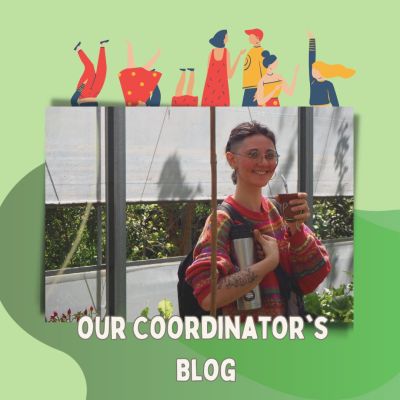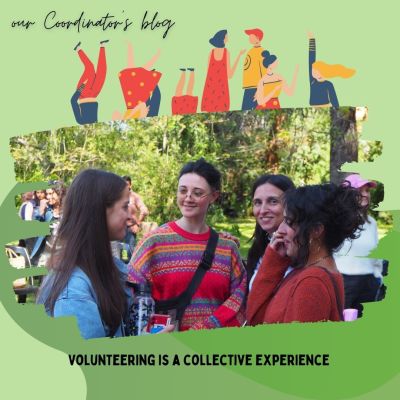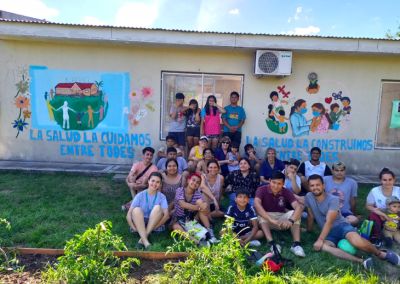Even for people who know very little about Buenos Aires, the name La Boca always seems to ring a bell. With its renowned multi-coloured houses and football stadium, ‘la Bombonera’ home to the infamous Boca juniors, it has always been a popular destination for tourists. However, how much do people really know about this ‘barrio’? Last week we visited the Community Centre ‘Los Pibes’ in which Voluntario Global plays a large role and decided to do some research on the history, current situation and impact of the Community Centre in la Boca. History La Boca generates its name because the neighborhood sits at the mouth (“boca” in Spanish) of the Riachuelo. It lies near the old port but unfortunately the water is not deep enough for large vessels so the port did not do much to boost their economic situation. Thus the principal industries in La Boca used to be salting meat for transportation and leather tanneries. The fact that it is near a port, did however play a large part in forming La Boca’s history. In the colonial period La Boca was home to imported slaves and in the late 19th century, Italian immigrants settled in tenements. They painted their houses with left over paint bought over by sailors which explains the characteristic multi-coloured houses now seen on ‘el Caminito’. Admittedly the colours were not always as flashy as they are today but the local painter, Quinquela Martin, urged his neighbours to use brighter colours for aesthetic effect. Additionally, the variety of immigrants all living together enriched la Boca’s culture and formed the melting pot of customs that can be seen to this day. For example the Genoese bought with them pasta, football and fashion; all of which continue to play an important role in the neighbourhood.La Boca also has a history of being a centre of radical politics. For example in 1882 the ‘barrio’ self-proclaimed itself as “Republica de la Boca” and many demonstrations were held during the crisis of 2001. This political attitude can still be seen today and is encouraged by ‘los Pibes’.
Social Problems La Boca’s most famous attraction is el Caminito, a road named after Juan de Dios Filiberto’s tango song therefore giving not only a touristic identity but also a cultural significance to this part of La Boca. On a first sight, tourists are impressed by the painted wooden houses. Adding to el Caminito, the historic team of Boca Juniors is another attraction of the neighbourhood, as it is both an attraction to foreign and Argentinean tourists, who go there to support the team. However, La Boca is not only one road (El Caminito) or one football team. Indeed, there are some views suggesting that these two attractions are an efficient way of covering up the extensive social problems of the neighbourhood. The social problems are different to other underprivileged neighbourhoods of Buenos Aires, but are more present and less exposed. As a matter of fact, when one researches anything on La Boca on the Internet the only reference to it, are the one mentioned above. Aside from the drug market, which is present all over the world, La Boca faces terrible contamination by the river Riachuelo, affecting the local population’s health.
Additionally, though unemployment has improved significantly over these past few years there is still a high rate of unemployment (around 7%) owing to the poor education system which also needs to be tackled. With the help of foreign and governmental aid, there is now a fund of $500 million to resolve the contamination problem. However, the pollution comes to la Boca via the Riachuelo which means that the slow process of cleaning the water is never-ending for the community. So far they have used $1 million of the $500 so la Boca still has it’s work cut out. Impact of ‘Los Pibes’ Community Centre What struck us most about the Community Centre was the overwhelming positive atmosphere. We were welcomed in and taken on a tour of the different aspects of the community center. The women in the small clothes factory, bakery and soup kitchen explained the nature of their work and Berta took us into the homework club where the children were being encouraged to put the Jenga game away and start their homework! Berta emphasized that after a long day at school she would rather encourage and support their work to increase their self-confidence rather than make them do it which mirrors the general heartening atmosphere in the community centre. Johan then took us to the radio where that day’s programme was just being prepared and willingly answered any questions we had. Everyone who plays a part in the community centre gets a weekly quota of food depending on the number of hours that they work and their families can use the Community’s facilities such as the computer classes, English lessons and the soup kitchen. The centre also runs monthly meetings called ‘Reunion de Jovenes’. In these meetings they discuss politics, raise awareness and mobilize interest. This has a great impact on the youth involved as the poor education system does little to motivate their interests and the meetings presents them with other opportunities.




